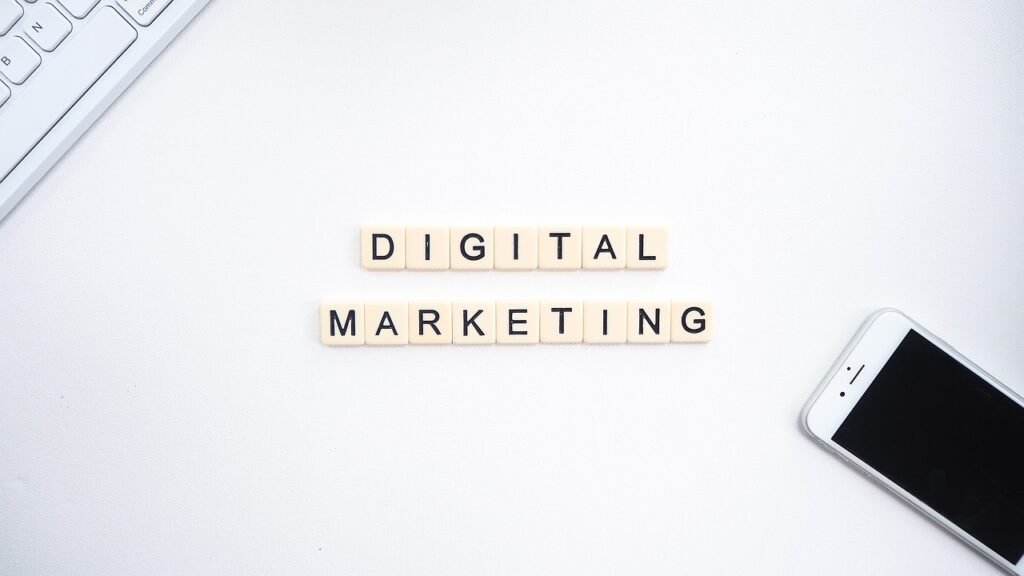Running a small business is no small feat. You’re juggling a lot, from managing your team to keeping customers happy. And then there’s marketing. How do you get your business noticed without spending a fortune? The good news is, there are plenty of affordable marketing strategies that can help your small business grow. Let’s dive into these cost-effective methods that can make a big impact.
Understanding Your Market
Deep Dive into Demographics
To market effectively, you need a deep understanding of your target demographic. Start by gathering data on age, gender, income levels, education, and lifestyle. Tools like the U.S. Census Bureau, local chamber of commerce reports, and online databases provide rich sources of demographic information.
For a more granular approach, use analytics from social media platforms and your website to see who is interacting with your brand. This demographic data helps tailor your messaging and product offerings to better meet the needs and preferences of your audience.
Psychographics: Understanding the Mindset
Beyond demographics, psychographics focus on the attitudes, values, and interests of your audience. Conduct surveys and focus groups to gather insights into what motivates your customers. What are their hobbies? What values do they hold dear?
Understanding the psychological and emotional triggers that influence their buying decisions allows you to craft more compelling marketing messages. For instance, if your audience values sustainability, emphasize eco-friendly practices in your marketing.
Create Detailed Buyer Personas
Developing detailed buyer personas is crucial. These semi-fictional characters represent your ideal customers and are based on data and insights gathered from your market research. Include information about their daily routines, challenges, and what they value in a product or service.
For example, a buyer persona for a fitness studio might be “Sarah, a 30-year-old professional who values wellness and convenience.” These personas guide your marketing strategies, ensuring your campaigns resonate on a personal level.
Identify Market Trends
Stay ahead by identifying and capitalizing on market trends. Regularly read industry publications, attend webinars, and join relevant professional groups. Use tools like Google Trends to see what topics are gaining traction in your industry.
Understanding market trends helps you adapt your offerings and marketing strategies to meet evolving customer needs. For instance, if there’s a growing interest in remote work solutions, a tech company might shift focus to products that enhance home office setups.
Utilize Competitive Intelligence
Competitive intelligence goes beyond basic competitor analysis. Use tools like SEMrush, Ahrefs, or SpyFu to gather detailed insights into your competitors’ online strategies, including their keyword usage, backlink profiles, and ad campaigns.
Subscribe to their newsletters, follow their social media, and study their customer reviews. This information helps you understand their strengths and weaknesses, allowing you to position your offerings more effectively and identify opportunities to differentiate your brand.
Geographic Targeting
For businesses with a local or regional focus, geographic targeting is essential. Understand the specific needs and preferences of customers in different areas. Use location-based marketing strategies, such as local SEO and geo-targeted ads, to reach your audience more effectively.
For example, a restaurant could use geo-targeted ads to promote special offers to nearby residents. Geographic insights can also inform decisions about where to open new locations or where to focus your marketing efforts.
Customer Journey Mapping
Map out the customer journey to understand how potential customers interact with your brand from awareness to purchase and beyond. Identify key touchpoints and channels where customers engage with your business. This might include social media, your website, email marketing, or in-store visits.
Understanding the customer journey helps you optimize each stage to improve the overall experience and increase conversions. For instance, if many customers drop off during the checkout process, streamline and simplify the checkout to reduce friction.
Leverage Behavioral Data
Behavioral data provides insights into how customers interact with your business. Use analytics tools to track actions such as website visits, clicks, time spent on pages, and purchase history.
Behavioral insights help you understand what customers are looking for and how they interact with your offerings. This data can inform personalized marketing strategies, such as product recommendations based on browsing history or targeted emails triggered by specific actions.
Social Listening
Social listening involves monitoring social media platforms for mentions of your brand, competitors, and relevant keywords. This practice helps you understand what your audience is talking about, their sentiments, and emerging trends. Use tools like Hootsuite, Brandwatch, or Sprout Social for social listening.
The insights gained can guide your content strategy, product development, and customer engagement tactics. For example, if you notice frequent complaints about a competitor’s product, emphasize your superior solution in your marketing.
Align Marketing with Business Goals
Ensure your marketing strategies align with your overall business goals. If your goal is to increase brand awareness, focus on content marketing, social media engagement, and PR efforts. If your aim is to boost sales, prioritize targeted advertising, promotions, and conversion rate optimization.
Regularly review and adjust your marketing plans to ensure they support your business objectives effectively. Clear alignment between marketing efforts and business goals ensures cohesive and strategic growth.
Engage in Direct Customer Outreach
Direct outreach can provide invaluable insights and build strong relationships with your customers. Reach out to past and current customers through phone calls, emails, or in-person meetings. Ask for their feedback on your products, services, and overall experience.
This direct engagement can uncover insights that surveys or data analysis might miss, such as specific pain points or unique needs. Additionally, it shows customers that you value their input and are committed to continuous improvement.
Implement A/B Testing
A/B testing, or split testing, involves comparing two versions of a marketing asset to see which performs better. This could be an email subject line, a website landing page, or a social media ad.
By systematically testing different variations, you can identify what resonates best with your audience and optimize your marketing efforts. For example, if an A/B test reveals that a certain headline increases click-through rates, you can implement similar wording across other campaigns.
Building a Strong Online Presence

Focus on Mobile Optimization
With more people using smartphones to browse the internet, it’s essential that your website is optimized for mobile devices. Ensure your website design is responsive, meaning it adapts seamlessly to various screen sizes. Test your website’s mobile friendliness using tools like Google’s Mobile-Friendly Test.
Mobile optimization isn’t just about design; it also involves ensuring fast load times and easy navigation. Simplify menus, use larger fonts for readability, and ensure buttons and links are easily tappable. A mobile-optimized website improves user experience and can boost your search engine rankings.
Develop a Comprehensive SEO Strategy
A strong SEO strategy is critical for driving organic traffic to your website. Start with keyword research to identify the terms your potential customers are searching for.
Use tools like Google Keyword Planner or Ahrefs to find relevant keywords with high search volume and low competition. Integrate these keywords naturally into your website content, including blog posts, product descriptions, and meta tags.
Focus on both on-page SEO (such as optimizing titles, headers, and images) and off-page SEO (like building high-quality backlinks). Regularly update your content to keep it fresh and relevant, which can improve your rankings and attract more visitors.
Leverage Local SEO
For small businesses, local SEO can be a game-changer. Ensure your business is listed in online directories like Google My Business, Yelp, and Bing Places. Complete your profiles with accurate and detailed information, including your business name, address, phone number, and operating hours.
Encourage satisfied customers to leave reviews, as positive feedback can improve your local search ranking and attract new customers. Use location-specific keywords in your website content to target local searches. Additionally, participate in local community events and online forums to increase your visibility and build a strong local presence.
Create High-Quality Content
Content marketing is a cost-effective way to attract and engage your target audience. Focus on creating high-quality content that provides value to your customers. This could include blog posts, how-to guides, videos, infographics, and podcasts.
Consistency is key; establish a content calendar to ensure you’re regularly publishing new material. Make your content shareable by adding social sharing buttons and encouraging readers to share it with their networks. High-quality content not only attracts visitors but also helps establish your business as an authority in your industry.
Engage with Visual Content
Visual content is highly engaging and can capture the attention of your audience quickly. Use high-quality images, videos, and graphics to complement your written content. Platforms like Instagram and Pinterest are perfect for sharing visual content. Create visually appealing posts that highlight your products, services, and company culture.
Video content, in particular, can be very effective; consider creating product demos, customer testimonials, and behind-the-scenes videos. Live streaming on platforms like Facebook Live or Instagram Live can also help you connect with your audience in real-time and build a stronger relationship.
Utilize Social Proof
Social proof is a powerful tool for building trust and credibility online. Display customer reviews, testimonials, and case studies prominently on your website. Share user-generated content, such as photos and stories from satisfied customers, on your social media channels.
Highlight any awards, certifications, or media mentions your business has received. Social proof reassures potential customers that others have had positive experiences with your business, which can increase their confidence in choosing your products or services.
Implement Email Marketing Campaigns
Email marketing remains one of the most effective ways to nurture leads and maintain customer relationships. Build your email list by offering incentives like discounts, free resources, or exclusive content in exchange for sign-ups. Segment your email list to send targeted messages that resonate with different customer groups.
Personalize your emails to make them more engaging, using the recipient’s name and relevant content based on their preferences and behavior. Regularly send newsletters with updates, special offers, and valuable information. Analyze your email campaign performance and make adjustments to improve open rates, click-through rates, and conversions.
Invest in Pay-Per-Click (PPC) Advertising
PPC advertising can be a cost-effective way to drive targeted traffic to your website. Platforms like Google Ads and Facebook Ads allow you to set a budget and only pay when someone clicks on your ad. Use PPC to target specific keywords, demographics, and geographic locations.
Craft compelling ad copy that highlights the unique benefits of your products or services. Monitor your campaigns closely and make data-driven adjustments to improve performance. PPC can provide immediate visibility and help you reach potential customers who are actively searching for what you offer.
Foster Community Engagement Online
Building a strong online community can enhance your brand loyalty and word-of-mouth marketing. Engage with your audience by responding to comments and messages on social media promptly. Create online groups or forums where customers can interact, share experiences, and provide feedback.
Host online events, such as webinars, Q&A sessions, or virtual workshops, to engage with your audience in real-time. Show appreciation for your community by highlighting customer stories and giving shout-outs to loyal followers. A strong online community fosters a sense of belonging and encourages customers to become advocates for your brand.
Utilize Analytics to Refine Your Strategy
Regularly analyze your online presence to understand what’s working and where you can improve. Use tools like Google Analytics, social media insights, and email marketing reports to track key metrics. Look at website traffic, user behavior, conversion rates, and engagement levels.
Identify trends and patterns to see which strategies are most effective. Use this data to refine your marketing efforts, focusing on tactics that deliver the best results. Continuous analysis and optimization can help you stay ahead of the competition and achieve your business goals.

Content Marketing on a Budget
Focus on Quality Over Quantity
When it comes to content marketing, quality always trumps quantity. It’s better to create a few high-quality pieces of content that truly resonate with your audience than to churn out numerous low-value posts. Start by identifying key topics that align with your audience’s interests and needs.
Invest time in thorough research to produce in-depth, well-crafted content. High-quality content is more likely to be shared, earn backlinks, and perform well in search engine rankings, providing better returns on your investment.
Leverage Free Content Creation Tools
Numerous free tools can enhance your content marketing efforts without breaking the bank. For graphic design, tools like Canva offer user-friendly templates for creating professional-looking visuals. For video content, platforms like iMovie or DaVinci Resolve provide powerful editing features at no cost.
Grammarly can help ensure your written content is polished and error-free. Utilizing these tools can significantly improve the quality of your content while keeping expenses low.
Build a Content Calendar
A content calendar is essential for maintaining consistency in your content marketing strategy. Plan your content in advance, mapping out key dates, topics, and publication schedules.
This approach not only keeps you organized but also ensures a steady stream of content that aligns with your marketing goals and seasonal trends. Consistency helps build audience trust and keeps your brand top of mind. Use free tools like Google Calendar or Trello to create and manage your content calendar.
Engage in Storytelling
Storytelling is a powerful content marketing tactic that can deeply engage your audience. Share stories about your business’s journey, customer success stories, or behind-the-scenes insights into your operations.
Personal stories resonate with readers and create an emotional connection, making your content more memorable and impactful. When customers can relate to your stories, they are more likely to trust and engage with your brand.
Utilize User-Generated Content
User-generated content (UGC) is a cost-effective way to boost your content marketing efforts. Encourage your customers to share their experiences with your products or services through reviews, testimonials, photos, and videos. Feature this content on your website, social media, and marketing materials.
UGC not only provides fresh content without the production cost but also adds authenticity and social proof to your marketing. Run contests or campaigns to incentivize customers to create and share content related to your brand.
Guest Blogging and Content Collaboration
Guest blogging and content collaboration are excellent strategies for expanding your reach and building relationships within your industry. Identify blogs and websites that cater to your target audience and offer to write guest posts.
This not only exposes your brand to a new audience but also helps build backlinks to your website, improving your SEO. Collaborate with other businesses or influencers to co-create content, such as joint webinars, interviews, or eBooks. These partnerships can enhance your credibility and extend your content’s reach.
Repurpose and Update Existing Content
Maximize the value of your existing content by repurposing and updating it. Transform a high-performing blog post into a video, infographic, or podcast episode. Break down a comprehensive guide into a series of social media posts.
Regularly update older content with new information, statistics, and insights to keep it relevant and boost its performance. Repurposing content saves time and effort while ensuring you continuously provide valuable information to your audience.
Focus on Evergreen Content
Evergreen content remains relevant and valuable over time, providing long-term benefits for your content marketing strategy. Focus on creating content that addresses timeless topics and common questions in your industry. This could include how-to guides, industry best practices, or in-depth explanations of core concepts.
Evergreen content continues to attract traffic, generate leads, and build your authority long after it’s published. Regularly review and refresh your evergreen content to maintain its relevance and effectiveness.
Optimize Content for SEO
SEO is crucial for maximizing the reach and impact of your content. Conduct keyword research to identify terms your audience is searching for and integrate these keywords naturally into your content. Optimize meta titles, descriptions, and headers to improve search engine visibility.
Use internal and external linking to enhance your content’s SEO performance. Regularly monitor your content’s performance using analytics tools and make data-driven adjustments to improve its search rankings and engagement.
Foster Community Engagement
Encourage your audience to engage with your content through comments, shares, and discussions. Ask questions, invite feedback, and create opportunities for interaction.
Respond to comments and messages promptly to build relationships and foster a sense of community around your brand. Active engagement not only boosts your content’s reach but also provides valuable insights into your audience’s preferences and needs.
Leverage Content Distribution Networks
Effective content distribution is key to reaching a wider audience. Share your content across multiple platforms, including your website, social media, email newsletters, and relevant online communities.
Use content distribution networks like Medium, LinkedIn Pulse, and industry-specific forums to amplify your reach. Tailor your content distribution strategy to the preferences and behaviors of your target audience, ensuring your content is seen by those who are most likely to engage with it.
Networking and Building Relationships
Attend Networking Events
Networking events are invaluable for small business owners. Attend local business meetups, trade shows, and industry conferences to connect with other professionals and potential customers. These events provide opportunities to share your business story, exchange ideas, and build relationships. Don’t forget to bring plenty of business cards and follow up with new contacts after the event.
Partner with Other Small Businesses
Forming partnerships with other local businesses can be mutually beneficial. Look for businesses that complement yours and explore ways to collaborate. This could include joint promotions, referral programs, or bundled offers.
For example, a local bakery could partner with a nearby coffee shop to offer a special discount when customers visit both locations. Partnerships can expand your reach and attract new customers without a significant financial investment.
Offer Workshops and Classes
Hosting workshops or classes related to your business can attract potential customers and showcase your expertise. For example, a health food store might offer nutrition workshops, or a home improvement store could hold DIY classes.
These events not only provide value to attendees but also create an opportunity to promote your products or services. Promote these events through your website, social media, and local community boards.
Volunteer and Give Back
Getting involved in community service and local charity events can raise your business’s profile and build goodwill. Sponsor local events, participate in charity runs, or offer your services for free to community projects.
Giving back to the community not only helps those in need but also shows that your business cares about making a positive impact. This can strengthen your reputation and build a loyal customer base.
Enhancing Customer Experience

Provide Exceptional Customer Service
Exceptional customer service is one of the best marketing strategies you can implement. Happy customers are likely to return and recommend your business to others. Train your staff to be friendly, helpful, and attentive to customer needs. Go the extra mile to resolve any issues and exceed customer expectations. Positive word-of-mouth can be a powerful and cost-effective way to grow your business.
Encourage Customer Reviews and Testimonials
Encourage satisfied customers to leave reviews and testimonials on platforms like Google, Yelp, and your website. Positive reviews can significantly influence potential customers’ decisions.
Make it easy for customers to leave reviews by providing direct links and gently reminding them after a purchase. Displaying testimonials on your website and social media can build credibility and trust.
Implement a Loyalty Program
A loyalty program can help retain customers and encourage repeat business. Offer rewards such as discounts, free products, or special offers to customers who make frequent purchases.
A simple punch card system or a digital loyalty program can be effective. By showing appreciation for your customers’ loyalty, you can build stronger relationships and increase customer retention.
Collect and Act on Feedback
Regularly collect feedback from your customers to understand what you’re doing well and where you can improve. Use surveys, feedback forms, and direct conversations to gather insights.
Act on the feedback you receive to enhance your products, services, and overall customer experience. Demonstrating that you value and respond to customer input can foster loyalty and positive word-of-mouth.
Conclusion
Marketing a small business on a tight budget is challenging, but with creativity, strategic planning, and consistent execution, it’s entirely achievable. Understanding your market deeply, building a strong online presence, and leveraging content marketing are foundational steps that can set your business apart.
Quality over quantity, engaging storytelling, and utilizing free and affordable tools are essential tactics that drive significant results without heavy financial investment.
Always remember, consistency is key. Regularly engaging with your audience, whether through social media, content updates, or email marketing, keeps your business top of mind and builds a loyal customer base.
The insights gained from market research, competitive analysis, and customer feedback should continually inform and refine your strategies, ensuring they remain effective and relevant.
Read Next:
- How to Market Your Dispensary Effectively
- Effective Grassroots Marketing Strategies
- Marketing Statistics for Small Businesses in 2024
- B2B Video Marketing: Key Statistics for 2024
- X (Twitter) Marketing: Key Statistics for 2024






















Comments are closed.